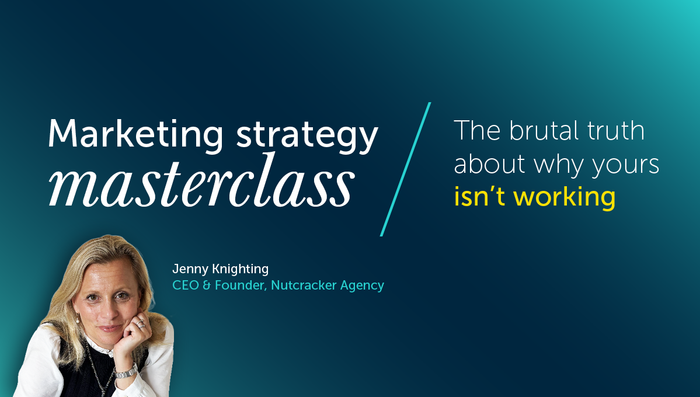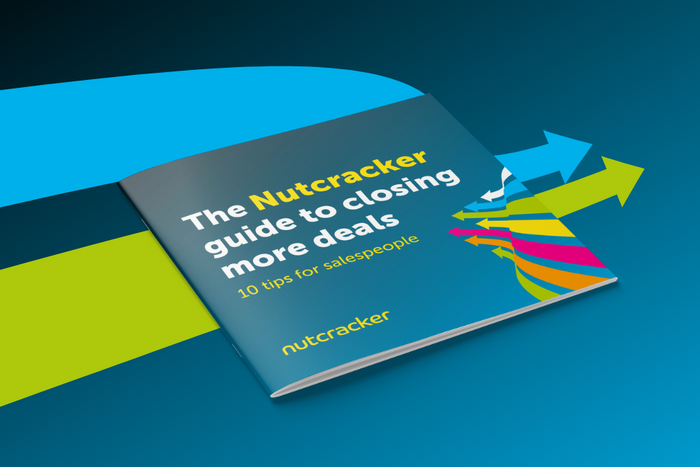Sales & Lead Generation
The Guide to Using Video for B2B Lead Generation
TLDR: Summary
Video isn't just a powerful engagement tool it's a high-impact engine for B2B lead generation. This guide provides a strategic framework for using video content to fill your pipeline and drive revenue. You'll learn which types of videos to create for each stage of the sales funnel, how to distribute them for maximum reach, and the key metrics you need to track to measure success and prove ROI.
Here’s how to use video to grow your market share
In today’s digital world, attention is the most valuable commodity. With the average person scrolling through endless feeds, video content has emerged as the most powerful way to capture and hold it. But in the B2B world, video is more than just a creative asset; it’s a direct line to your sales pipeline.
Videos are highly engaging, they build trust quickly, and they’re easy for people to consume, even busy decision-makers. In fact, studies show that marketers who use video grow revenue nearly 50% faster than those who don't. Here’s how to strategically use video to generate leads and grow your business.
Step 1: mapping video content to the B2B sales funnel
Your prospects are on a journey, and the video content you create must match their mindset at every stage.
Top of Funnel (Awareness): At this stage, your prospects are just starting to research a problem. They’re not ready for a sales pitch.
The goal is to attract a wide audience, establish your expertise, and build brand awareness.
Middle of Funnel (Consideration): Prospects are now actively evaluating solutions. They want to learn more about how you can solve their problem.
The goal here is to prove your value, build trust, and demonstrate why your solution is the best choice.
Bottom of Funnel (Decision): Prospects are ready to buy. They need a final piece of information to justify their decision.
The goal here is to close the deal by providing the final evidence they need to convert.
Step 2: Video content types for every stage
Now that you have a map, it’s time to fill it with the right video content.
Awareness stage videos
High-level explainer videos that are engaging to explain a core problem and your business’s unique solution.
Thought leadership videos in formats like interviews, webinars, and vlogs where your team provides valuable industry insights.
Consideration stage videos
Product demos that walk prospects through your product's key features and show them exactly how it works.
Customer testimonials that let your happy customers tell your story for you. Seeing a real person get value from your solution is incredibly powerful.
Decision stage videos
Case studies with a full narrative that follows a customer from their initial problem to their success with your product. This is a must-have for your sales team.
Video FAQs that answer common questions to remove any final barriers to a purchase.
Step 3: optimising your videos for search & distribution
A great video is useless if no one sees it. You need a strategy to get your content in front of your target audience.
Video SEO is what gets your ideas seen and heard. Treat your videos like a blog post. Use keywords in your title, description, and tags to help them rank on YouTube and Google. Be sure to add a transcript to every video to make it even more discoverable by search engines.
Host your video content on a platform that supports lead generation, such as Vimeo or Wistia, which allows you to gate videos behind a form. Embed videos on relevant blog posts, landing pages, and email campaigns to drive conversions. To learn more about this, read our guide on how to fill a new business pipeline using content marketing.
Step 4: Measuring Your Video ROI: Key Metrics to Track
The goal of video for B2B is not just views; it’s conversions and revenue. Here are the key metrics to track:
- Measure the view-through rate to see how much of your video are people watching? A low view-through rate might mean your content isn't as engaging as you thought.
- Measure the click-through rate (CTR) to see if people are clicking on the call to action within your video. This is a direct measure of its effectiveness.
- Measure the lead conversion rate when working with gated content. This is the percentage of viewers who provide their information and become a lead. This is the most important metric for proving the ROI of your video.
- Measure the pipeline contribution by using your CRM to track which leads were influenced by a video asset and how many of them convert into a sale. This is the ultimate proof of value.
By building a strategic video marketing program, you can consistently engage prospects and nurture them from initial interest to a closed deal. To learn more about how to engage prospects and nurture leads, read our guide on B2B lead nurturing. For a full breakdown of how to build a winning marketing strategy, explore our B2B Marketing Strategy services.
How to use video in your marketing campaigns
If you have ever wondered whether it’s worth investing in video for your marketing these two statistics will answer the question:
- Marketers who use video grow revenue 49% faster than those who don’t
- 97% of B2B buyers say they would be more receptive to sales communications from a business after viewing their video content. (Brightcove)
- Web pages with video are 53 times more likely rank on the first page of Google
There is no question whether video helps you grow your market share. The question is how to use it for maximum value and impact. Here’s how.
The best length for your videos
Like any content, video needs to be created with empathy for the audience. In B2B sales and marketing, that more or less always means shorter is better. Your audience is time poor, and in a lot of video formats they can see a progress bar at the bottom of the video telling them how long the video is. If the pace is too slow or the length to great, then your audience has every reason to ignore the video and move on.
So how short is short? To an extent, that depends on where you publish it. Hubspot breaks down what it considers the ideal video length per platform:
- Instagram: 30 seconds
- X: 45 seconds
- Facebook: 1 minute
- YouTube: 2 minutes
The best content for your videos
What should be in your videos? Again, purpose is the deciding factor. An explainer video will need more content, more illustrations, and more facts than a video designed to showcase your brand, which on the whole will be more about look, feel, and tone.
One principle to consider is that videos featuring people are most likely to inspire trust. A human connection creates more warmth for the brand, and reassures prospects that there is a real team behind the brand. That visibility and openness can make people feel comfortable very effectively, and gives them a personality to gravitate towards. In fact, content featuring faces is 38% more likely to get ‘likes’ on social media and 32% more likely to get comments.
The added bonus is that it takes very little time and budget to create a short talking head video. One person with a mobile phone can record themselves speaking, and that can resonate deeply.
However, production values also communicate something crucial — investment. When you create a slick, high quality video, you signal intent. The audience understands unconsciously that you have poured resources into content, which suggests yours is a stable business with long-term intent. Put more casually, it shows you have put your money where your mouth is.
The best strategy for your videos
For the most part, video marketing is labour-intensive to produce, so you will want the maximum ROI for it. That means rather than creating one video and simply publishing it, you should repurpose and reuse it, for example by editing and sharing clips.
Video will also be more powerful as part of a wider campaign, so consider how it fits into your objectives and what purpose is at its heart. If it is there to build communities, it should be provocative, informative, inspiring, or all three. If it is content for sales teams to send after initial conversations with prospects, then it should pick up, supplement, and develop sales messaging. In any case, it should complement social media posts, support long form content, and reinforce or at least fit with the message of an overarching brand strategy.
33% of teams face the challenge of not knowing how to design a video strategy, and 29% struggle to generate content ideas to film in the first place. If you think video might be the medium to reach your audience, but you’re not confident planning and executing it, then Nutcracker is always on hand.
Whether it is a brand video to showcase your business, thought-provoking clips to build communities on social media, or sales collateral to help keep prospects excited and close more deals, we create videos, content, and marketing strategies that grow your business and your market share.
Find out if we’re the partner for your project by emailing our CEO Jenny on jenny.knighting@nutcrackeragency.com.
To read more about how to claim more clients and more budget, even in a tough economy, get your copy of our free guide Claiming the Spotlight.
Recommended Reading
B2B Brand Storytelling Will Grow Your Business. Here's How.
This article goes hand-in-hand with video marketing. Video is the single most powerful medium for telling a compelling brand story. This guide provides a strategic framework for crafting a narrative that builds trust, creates emotional connections, and positions your customer as the hero of the journey, all of which are essential ingredients for a successful video marketing campaign.
Author bio
Lee Knighting – Interim Creative Director at Nutcracker Agency
As Interim Creative Director at Nutcracker—a dynamic, award-winning B2B marketing agency with offices in Ipswich and London, Lee Knighting brings a passion for creativity, visual storytelling, and design leadership to the heart of every campaign. In this pivotal leadership role, Lee champions creative excellence, ensuring that every visual strategy not only aligns with commercial objectives but also resonates deeply with audiences.
Drawing on his deep understanding of brand development and design strategy, he leads creative teams to craft campaigns that are both visually arresting and strategically sound. Lee believes that design is more than aesthetics; it’s the narrative engine that transforms ideas into engaging, memorable experiences.
At Nutcracker, Lee plays a crucial role in fostering a culture where creativity thrives, collaboration is seamless, and brand stories are told with clarity, purpose, and impact.
Share this:






